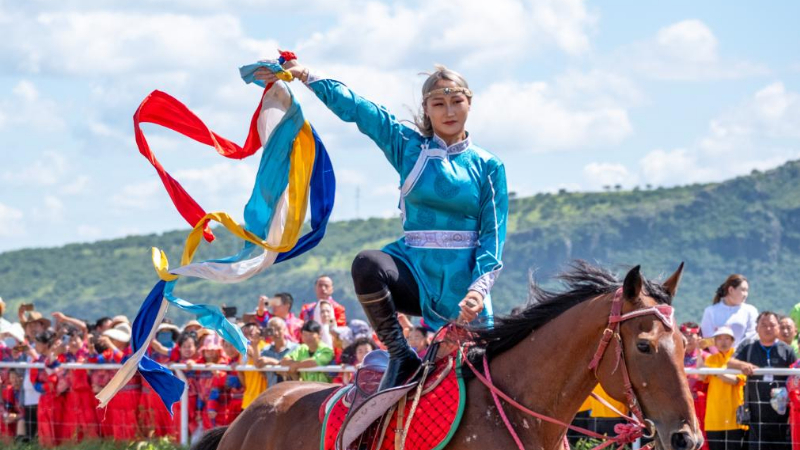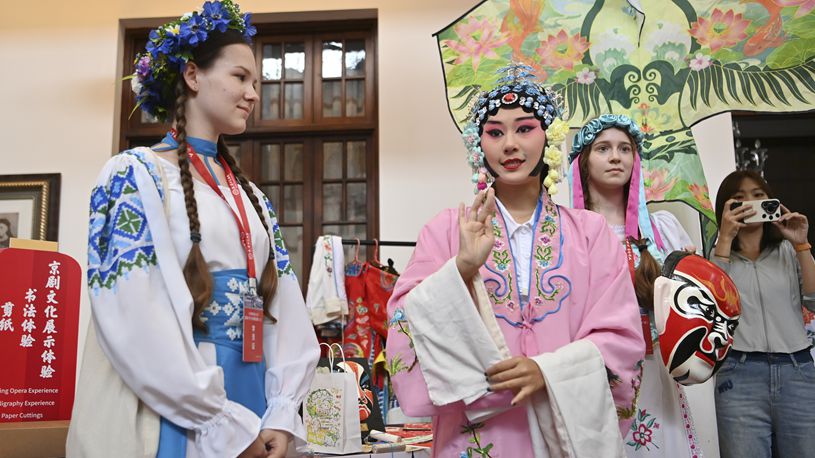Booming pet economy sparks big demand for a forgotten crop
Source: Xinhua
Editor: huaxia
2025-08-08 12:13:15
LANZHOU, Aug. 8 (Xinhua) -- In the cool highlands of Minxian County in northwest China's Gansu Province, a humble grass once grown exclusively for racehorses now feeds millions of hamsters, chinchillas and guinea pigs across China.
Cat-tail grass, also known as timothy, was introduced to China from overseas in the 1940s. When it heads, the plant looks like a fluffy cat's tail. For decades, it was sold in bulk but often failed to find buyers. But with the recent boom in the country's pet industry, this unassuming plant has found a new calling.
In 2017, Li Guxia, a young entrepreneur returning from big cities, saw an opportunity in e-commerce and began selling 500-gram packets of cat-tail grass online. What was once a bulk commodity suddenly found a new market, as urban pet owners in cities like Beijing and Shanghai eagerly bought the neatly packaged grass, willing to pay extra for their beloved small pets. Rich in fiber and easy to digest, cat-tail grass quickly became a must-have for pet lovers across China.
Located on the edge of the Qinghai-Tibet Plateau, the region's cold and humid climate provides ideal conditions for this plant to thrive.
Today, Minxian County boasts more than 6,666 hectares of cat-tail grass, accounting for over 85 percent of China's total output, with 19,000 households making a living from the crop.
Drying is crucial, as 12 kilograms of fresh grass shrink down to just 1 kilogram of fragrant hay. To keep the ovens running throughout the harvest, the local power company installed a new 200-kVA transformer in Lizhu Village, according to Lin Wenpeng, head of Lizhu Forage Family Farm in the county.
Lin, once a migrant worker, now farms around 33 hectares of cat-tail grass and even ships overseas to Malaysia through cross-border e-commerce. Last year, his gross income reached 1 million yuan (about 140,000 U.S. dollars), all thanks to this crop.
Others have expanded beyond the basics. Li Guxia's team has developed over 70 products, including chew sticks and bath sand. She also plans to tailor products for different small animals that consume cat-tail grass, creating specialized offerings for each.
Wang Wenjuan, general manager of Gansu Jiazhiyuan Agricultural Development Co., Ltd., recognizes the huge potential in cat-tail grass. With young pet owners increasingly treating their small pets like family and investing in their well-being, demand is rising. In 2023, her company expanded its reach by opening a store on Amazon, the world's largest cross-border platform, and began exporting cat-tail grass internationally, according to Wang.
China's booming pet economy has also quietly transformed Minxian's age-old farming traditions into a more sustainable practice.
Bao Weiping, head of the animal husbandry center in Minxian, said that the county is famous for medicinal herbs that are widely used in traditional Chinese medicine (TCM).
For local farmers, rotating cat-tail grass with these TCM crops not only gives the soil a rest but also improves its structure, Bao added.
Meanwhile, in neighboring Zhangxian County, Yang Xiaoyong has leased around 133 hectares and hired 20 local workers to cultivate cat-tail grass. Even the lower-grade grass sells well, serving as feed to fatten local cattle.
After selling her own crop for 20,000 yuan this year, Wang Huanping now earns an additional 100 to 200 yuan a day drying grass at Yang's forage industry company.
The pet population in China's urban area alone had reached 120 million in 2024, according to the 2025 China Pet Industry White Paper.
China's pet market is now in a period of rapid growth and is projected to climb to 811.4 billion yuan by 2025, said an annual pet industry report by KPMG China. ■











Comments